Nate's reviews and writings
Bionic Commando Rearmed 2
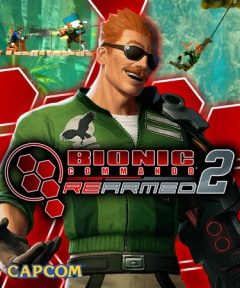 One of my favorite activities in college was brainstorming ideas with my
roommates. When bored, we would gather in the living room, get out the
whiteboard, and come up with some imaginative business idea or a
get-rich-quick scheme or an outline of a blockbuster screenplay. The
ambitiousness of our outlandish dreams was matched only by our
enthusiasm to start making them a reality.
One of my favorite activities in college was brainstorming ideas with my
roommates. When bored, we would gather in the living room, get out the
whiteboard, and come up with some imaginative business idea or a
get-rich-quick scheme or an outline of a blockbuster screenplay. The
ambitiousness of our outlandish dreams was matched only by our
enthusiasm to start making them a reality.Then, after disagreeing for a few hours about what the title should be for our Atlantis-set romantic comedy, we'd give up and play Smash Bros. For the record, though, I still think "Mermaid for Each Other" is just brilliant.
I get the feeling that Fatshark, the small Swedish developer given the reigns to Bionic Commando after its previous steward was dissolved, had similarly lofty goals and equally tragic work ethic for the series' first 2-D sequel. The result is Bionic Commando Rearmed 2, a sequel that I suspect was conceived with a drive to do it big but produced with a reluctance to do it at all.
Mass Effect 2 (PS3)
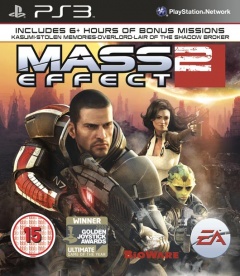 Some games are just so damn popular and beloved that you can't ignore them, no matter how hard you try.
Some games are just so damn popular and beloved that you can't ignore them, no matter how hard you try.When Mass Effect invaded my world in 2007, I couldn't have cared less. Sure, it was from the same BioWare that produced the excellent Knights of the Old Republic, and seducing blue women sounded like a pretty good time, but it definitely wasn't enough to put a 360 in my life. I'd grown weary of shooters of all kinds since burning out on Halo 2, and with RPG elements mashed in, it only seemed less enticing. I even gave the game a try last year on a friend's machine and didn't make it off the Citadel before losing interest.
The hype hasn't fallen on deaf ears, though. The rave reviews, rave first hour reviews, GOTY awards, and FOX News scare tactic hilarity all kept me up at night, wondering if I was missing out. EA was intent on making me give the series another shot, as they recently completed a PS3 port of Mass Effect 2. Because one of the series' bullet points is importing player-dictated narrative choices from the first game into the second, Dark Horse Comics was called in to help create a short interactive comic that fills in PS3 owners on some of the events that they missed out on from Commander Shepard's first adventure, even allowing the player to make some of the more important decisions to impact their experience with the full sequel.
As it turns out, that comic is DLC, unlockable either by a code included in the game's box or for $15. I rented the game and didn't plan on shelling out fifteen bucks for a fifteen minute comic, so I ended up going into the sequel without much knowledge from the first game. From that starting point aboard the exploding Normandy to the final trip through the Omega 4 relay, I've experienced just about everything included on the PS3 disc of Mass Effect 2 -- as much as you can in one playthrough, anyway -- as Elmer Shepard, a Vanguard of equal parts paragon and renegade, lover and fighter, savior and failure. And sometimes he forgets to feed his fish, and they die.
Greg has already written about the Mass Effect series extensively, having played both games and plenty of extra content on the 360. With that in mind, I'll try (but likely fail) to keep this brief. If you need a primer or refresher for the series, check out one of his excellent writeups. An avid fan of the series, he does a much better job of explaining the core elements of Mass Effect than I could.
Bionic Commando Rearmed 2
 Looking back, Bionic Commando Rearmed may have been a more
important game than most realize. It was one of the first blockbuster
hits on both the Xbox Live Arcade and PlayStation Network digital
distribution models, scoring critical praise unlike any other console
downloadable before it. It also arguably opened the floodgates for the
proliferation of retro-styled games and HD remakes: more and more
publishers are digging up their buried treasure and giving it a
spit-shine worthy of the HD era, and just as many are building new
experiences from old foundations.
Looking back, Bionic Commando Rearmed may have been a more
important game than most realize. It was one of the first blockbuster
hits on both the Xbox Live Arcade and PlayStation Network digital
distribution models, scoring critical praise unlike any other console
downloadable before it. It also arguably opened the floodgates for the
proliferation of retro-styled games and HD remakes: more and more
publishers are digging up their buried treasure and giving it a
spit-shine worthy of the HD era, and just as many are building new
experiences from old foundations.
It goes without saying that the company that spawned hundreds of Mega Man games would return to a good thing, so I'm a little surprised it's taken over two years for Capcom to follow up the original retro re-do. Bionic Commando Rearmed 2 is not quite the talk of the town in the same way the groundbreaking original (erm, original remake) was, but I've been looking forward to it since it was announced at last year's Captivate event. I'm rarely one to complain about getting more of the same, especially when it's as distinguished and polished as BCR was.
Some will cry foul at "Rad" Spencer's newfound ability to jump (gasp!), but it hardly appears to be the game-changer than many feared. Capcom has even affirmed that the game can be completed without ever taking a hop. I think I'll put that claim to the test for some of this first hour.
PS3 owners beware: Bionic Commando Rearmed 2 employs a type of DRM that requires you to start the game while connected to PlayStation Network. Inconvenient for a game that is played almost entirely offline.Devil May Cry 3: Dante's Awakening
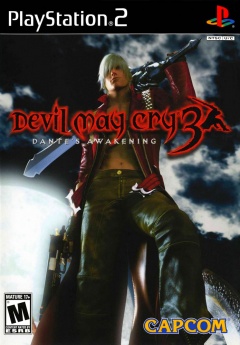 The video game industry isn't as surprising as we'd like to think. Sequels
rule the sales charts, and even new IPs tend to be paint jobs of
proven gameplay schemes. It's easy to point the finger at developers and
publishers, but let's take a look at a few of the bigger gambles that
companies have taken with their properties.
The video game industry isn't as surprising as we'd like to think. Sequels
rule the sales charts, and even new IPs tend to be paint jobs of
proven gameplay schemes. It's easy to point the finger at developers and
publishers, but let's take a look at a few of the bigger gambles that
companies have taken with their properties.Back in 2001, the first footage for the next Legend of Zelda caused some serious uproar when, rather than an updated Ocarina of Time fantasy setting, the new game went with a wholly cel-shaded, cartoony art style. Many had been won over by the charming new Link by the game's release, but I bet that just as many swore off Nintendo for good after this "kiddie" debacle. Later in 2001, those who had recently purchased Metal Gear Solid 2 were appalled to find the game had pulled a bait-and-switch, tossing the series' longtime protagonist Solid Snake aside within the first hour of the game for a never before seen pretty boy. The ensuing explosion of discontent was megaton in proportion.
Nintendo and Konami have had their share of death threats on message boards for these switcheroos, and now it seems Capcom's neck is on the chopping block. The long-rumored Devil May Cry 5 was finally made public at TGS 2010 as "DmC," and fans were shocked to see that it would reboot the series with a new, barely recognizable, adolescent punk version of cocky anti-hero protagonist Dante. Further, Capcom itself isn't even spearheading the development of the title, leaving Heavenly Sword developer Ninja Theory in charge. The response has been almost entirely negative.Amidst all the noise on message boards and in video comments, I realized I hadn't spent any quality time with the old Dante myself, despite how much I enjoyed the modern Ninja Gaiden action games that are often compared to the Devil May Cry series. I borrowed a copy of the franchise's most acclaimed game, Devil May Cry 3 (which also happens to be the earliest in the series timeline) to serve as my official introduction to the outrageous half-demon. It's hard to empathize with the gamer rage that DMC fans feel at the moment, but will I change my tune after walking a mile in the old Dante's boots?2010 Games Roundup - Nate
Greg made his 2010 games roundup a few weeks ago, so I figured I might as well follow suit. 2010 saw my most productive gaming year by a wide margin: I caught up with plenty of past hits and kept up with a lot of the newest releases as well. There's a list here for each, and you'd have to go pretty far down either to find a game I'd call "bad."
So, here they are: the 2010 games I played, the 2010 games I missed, and the old titles I caught up with. What a year it was. I doubt I'll ever get another like it, so I'm happy to recount all that it was in this post.
Disney Epic Mickey
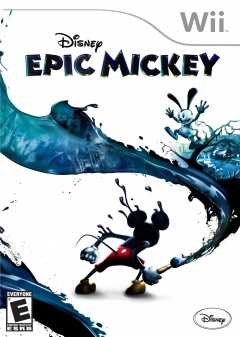 Mickey Mouse was never a big part of my early life. I guess that's to be
expected: my grandfather remembers seeing Mickey Mouse cartoons when he
was young, and a kids' cartoon character can only stay relevant for so
long. I've never been into the whole corruption-of-childhood-icons
thing, either. It always sort of struck me as puerile and cheap, like
finding a genitalia-spacecraft dogfight penciled into the margins of a
social studies textbook.
Mickey Mouse was never a big part of my early life. I guess that's to be
expected: my grandfather remembers seeing Mickey Mouse cartoons when he
was young, and a kids' cartoon character can only stay relevant for so
long. I've never been into the whole corruption-of-childhood-icons
thing, either. It always sort of struck me as puerile and cheap, like
finding a genitalia-spacecraft dogfight penciled into the margins of a
social studies textbook.
So when I first saw the Game Informer cover art for a dark take on Disney called Epic Mickey, I scoffed. I'd never imagined such a thing would exist, and I couldn't fathom it being worth a damn. I let out an unapproving sigh as I skimmed over the concept art in the magazine, featuring mechanical perversions of classic Disney characters. The designs themselves didn't bother me beyond their tired post-apocalyptic, steampunk styles, but the concept itself seemed like something a goth 7th grader might come up with after being dragged to Disney World by his family.
As it turns out, all of that imagery was just pre-production concept, used in the magazine to create as much hype as the shock value could muster. The final product has a safer appearance, one that most would say is more "tame." I think it's just less gimmicky. Further details would catch my interest as well, including the use of forgotten Disney properties to create an off-kilter gameworld (rather than just a dark one) and the moral freedom system that's supervised by a guy who excels at that sort of thing.
It's been a strange hype cycle, but Epic Mickey has finally arrived. For the first time, I'm actually anticipating a Mickey Mouse property. Is my newfound interest warranted, or should I have left it in the trash with that issue of Game Informer?Final Fantasy Crystal Chronicles: The Crystal Bearers
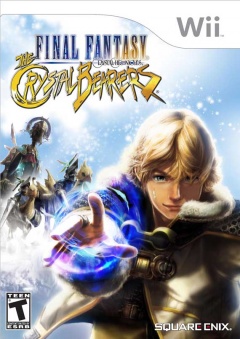 "Some of this game is fun...is that enough for me to keep playing?"
"Some of this game is fun...is that enough for me to keep playing?"
Ever had that feeling? Maybe you trudged through an RPG with a terrible battle system just because you liked a few of the characters. Perhaps you put up with a broken sports game just because the presentation was TV-true. Or maybe you played any of the open-world Spider-Man games recently, swinging joyously through the boxy Manhattan skyline, full of texture pop-in and framerate dips.
Final Fantasy Crystal Chronicles: The Crystal Bearers is kind of like that. Except where the fun elements of these previous examples are woven into the overall progression of the game, FFCCTCB never actually shines the spotlight on its best feature throughout the otherwise lackluster adventure, leaving it merely as a side attraction.I was hoping the game would improve after its first hour, and it did...but was it too little, too late?
Black
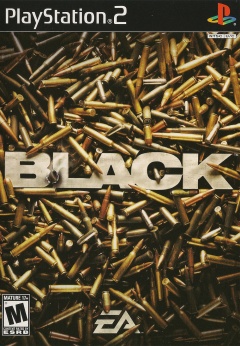 When I think back to the first time I saw Sonic the Hedgehog running on
the Genesis (which I wasn't yet familiar with), I recall marveling at
how much better it looked than the Mario games I had at home. I remember
the time my brother tried to explain Super Mario 64 to me, and how
little I understood what he was saying until I finally witnessed it in
action. When I brought home a Gamecube the morning it launched, I was
impressed with the speed and fluidity of the Death Star trench run that
began Rogue Leader, at least when compared to its predecessor on the
N64. But the first time I saw Call of Duty 2 at Toys R Us on an HDTV
screen, the only thought that ran through my mind was...
When I think back to the first time I saw Sonic the Hedgehog running on
the Genesis (which I wasn't yet familiar with), I recall marveling at
how much better it looked than the Mario games I had at home. I remember
the time my brother tried to explain Super Mario 64 to me, and how
little I understood what he was saying until I finally witnessed it in
action. When I brought home a Gamecube the morning it launched, I was
impressed with the speed and fluidity of the Death Star trench run that
began Rogue Leader, at least when compared to its predecessor on the
N64. But the first time I saw Call of Duty 2 at Toys R Us on an HDTV
screen, the only thought that ran through my mind was...
"Really? This is next-gen?"
Yes, the characters were constructed of more polygons. And the textures were clearer. And of course, the higher resolution made everything easier to see. But I just couldn't help but feel a little disappointed, seeing that the the game, and others in the 360 launch library, just didn't seem to bring any worthwhile improvements to the table. In fact, it wasn't until the first time I saw Lost Planet's smoking RPG trails, gorgeous boss monsters, and swarms of flying enemies that the feeling of a new generation really sank in.
On the other hand, many quality games are released at the end of a console's life cycle, once developers have a firmer grasp on the intricacies of the hardware. It is unfortunate that they're often overlooked for the next console's rushed launch titles, but that's reality. EA's Criterion studio, creators of the high-octane Burnout series, attempted to buck that trend with Black, a first-person shooter for the PS2 and Xbox that was marketed as a next-gen shooter for current-gen platforms.
The game certainly looked impressive the first time I saw a friend playing it, some five years ago. Does it still pack a punch, or will Black forever be lost between generations?
Fun Freebies: Give Up, Robot and Give Up Robot 2
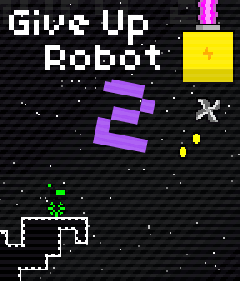 It's never been tougher to pin down just how much a game is
worth. Vanquish will last you all of five hours for its $60 entry fee,
but is it so much fun that you'll want to play it again and again?
Conversely, Fallout New Vegas offers days' worth of content to explore,
but is a buggy expansion pack really worth sixty Junior Bacon
Cheeseburgers? And why shell out full price for this year's sports title
when last year's model is nearly identical and can be bought for a
song?
It's never been tougher to pin down just how much a game is
worth. Vanquish will last you all of five hours for its $60 entry fee,
but is it so much fun that you'll want to play it again and again?
Conversely, Fallout New Vegas offers days' worth of content to explore,
but is a buggy expansion pack really worth sixty Junior Bacon
Cheeseburgers? And why shell out full price for this year's sports title
when last year's model is nearly identical and can be bought for a
song?
Thankfully, the whole discussion goes out the window when you can play the game for free. There are all kinds of browser games, smartphone apps, and free-to-play platforms out there that offer gaming goodness in exchange for nothing at all. There was a time when free Flash games were horrid experiences, not even worthy of killing time at work. But in the era of aggregate sites, app stores and user ratings, the fun freebies tend to rise to the top of the pile, where cubicle drones between TPS reports are more likely to find them.
I recently played through a few excellent little flash games at Adult Swim's website. Give Up, Robot and Give Up, Robot 2 gave me a few hours of die-and-retry platforming fun, and took nothing in return.Trauma Team
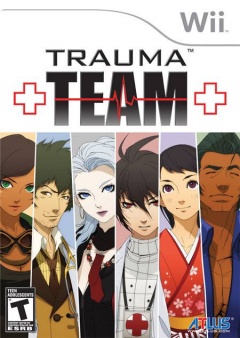 Classifying video games into genres can be a tricky ordeal. For
example, let's look at Fable.
It's a role-playing game because it uses
dynamic statistics as modifiers to its core mechanics, right? But one of
the
traditional indicators of an RPG video game is that it plays out with
little regard to nuanced player input: its action is menu driven and
often
turn based. Fable's real-time combat, on the other hand, relies on
player dexterity (as in an Action game) as much as it does the
quantifications of the battle engine. So, in our propensity to create
subgenres when things don't fit so neatly, we just call it an Action
RPG. However, it's hard to be satisfied with this conclusion when one
could replace every instance of "Fable" in this paragraph with "BioShock," "Mass Effect," or even "Star Ocean" and it would be no less true, even if all of these
games feel completely different in once you get your hands on the
controller.Okay, so there's obviously a problem when so many games in the same genre are so dissimilar. But what about when a game comes along and has no precedent to compare to? Case in point, where the hell does the Trauma Center series belong?
Classifying video games into genres can be a tricky ordeal. For
example, let's look at Fable.
It's a role-playing game because it uses
dynamic statistics as modifiers to its core mechanics, right? But one of
the
traditional indicators of an RPG video game is that it plays out with
little regard to nuanced player input: its action is menu driven and
often
turn based. Fable's real-time combat, on the other hand, relies on
player dexterity (as in an Action game) as much as it does the
quantifications of the battle engine. So, in our propensity to create
subgenres when things don't fit so neatly, we just call it an Action
RPG. However, it's hard to be satisfied with this conclusion when one
could replace every instance of "Fable" in this paragraph with "BioShock," "Mass Effect," or even "Star Ocean" and it would be no less true, even if all of these
games feel completely different in once you get your hands on the
controller.Okay, so there's obviously a problem when so many games in the same genre are so dissimilar. But what about when a game comes along and has no precedent to compare to? Case in point, where the hell does the Trauma Center series belong?
Trauma Center: Under the Knife arrived on the scene in the Nintendo DS launch window, requiring players to perform lightspeed surgeries using a variety of medical instruments through the handheld's touch screen. Ignoring the dearth of surgery games (or even touch screen games) to use as precedent, Trauma Center was still very tough to define. Can we really use the catchall Simulation genre for a game where heart surgery lasts all of a minute and Space Invaders can be found in the patient's lungs? Is it part visual novel merely because operations are bookended and pervaded by character portraits and dialogue? Not content to let us try and figure it out after four games, Atlus' fifth title in the franchise, Trauma Team, complicates things further by providing six different scenarios to play through, each with its own exploration within (and sometimes a bit outside) the traditional Trauma Center structure.
Okay, so I don't really know what to call it. A more important concern, though, is whether or not it's fun. So how did my first hour go with this...whatever it is?
